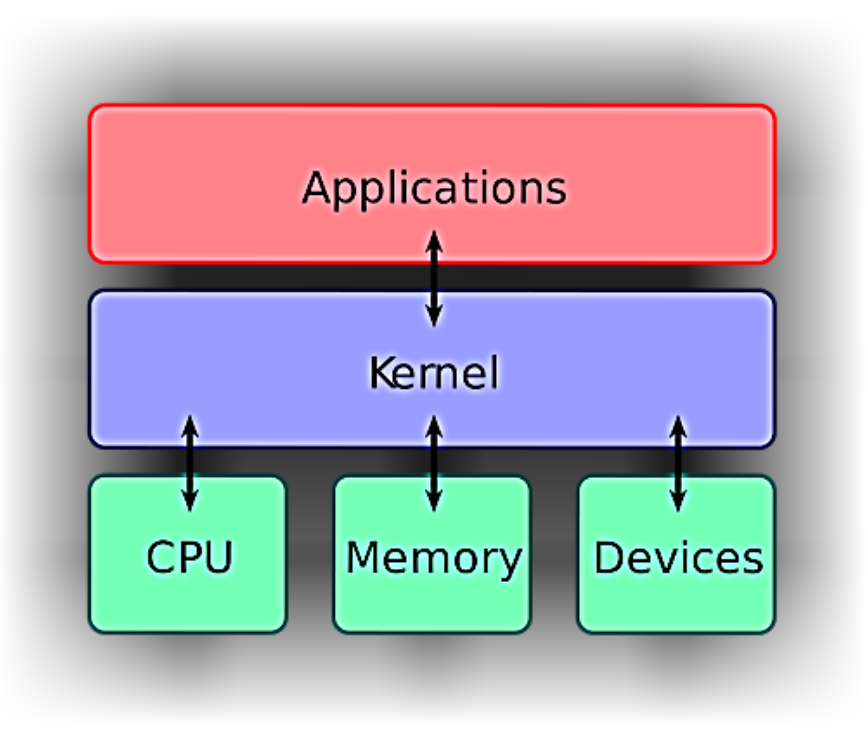Differences between Unix and Linux operating systems
In the computer age, a considerable number of people mistakenly believe that the Unix and Linux operating systems are the same. However, the opposite is true. Let's take a closer look.

In the IT field, Unix, known as the operating system, was developed by AT&T in New Jersey, USA in 1969 (its trademark rights are currently owned by the International Open Standards Organization). Most operating systems were inspired by Unix, which was also inspired by the unfinished Multics system. Another version of Unix was Play 9 from Bell Labs.
As an operating system, Unix is mostly used on servers, workstations, and now also on personal computers. It plays a very important role in creating the Internet, computer network or client/server model.
- Support multi-tasking
- The operation is simpler than Multics
- All data is stored in plain text
- Tree storage using a single root file
- Ability to access multiple user accounts simultaneously
a) A single-core operating system, responsible for low-level operations and operations initiated by the user. Communication between cores is performed through system calls. b) System tools c) Other applications

This is an open source operating system based on the principles of Unix operating system. As open source means, it is a system that is freely downloadable. It can also customize the system by editing, adding and extending its source code. This is one of its biggest benefits, unlike other operating systems today (Windows, Mac OS X, etc.) that require payment. The Unix system was not the only template for creating new systems. Another important factor was the MINIX system. Unlike Linus, this version was used by its creator (Andrew Tanenbaum) for commercial systems.
Linux was developed in 1991 by Linus Torvalds as an operating system as a personal hobby. One of the main reasons why Linux takes cues from Unix is because of its simplicity. The first official version of Linux (0.01) was released on September 17, 1991. Although the system was not perfect, Linus was very interested in it, and within a few days, Linus sent out some emails about Linux source code extensions and other ideas.
The cornerstone of Linux is the Unix kernel, which is based on the fundamental features of Unix as well as the POSIX and separate UNIX specification standards. It seems that the official name of the operating system is taken from Linus, where the "x" at the end of the operating system name is related to Unix system.
- Run multiple tasks simultaneously (multitasking)
- A program can contain one or more processes (multipurpose systems), and each process may have one or more threads.
- Multi-user, so it can run multiple user programs.
- Personal accounts are protected by appropriate authorization.
- So the account accurately defines system control.
Penguin Tux The logo author is Larry Ewing, who chose this penguin as the mascot for his open source Linux operating system. Linux Torvalds Originally proposed the name of this new operating system as "Freax", which is a combination of "free" and "freak" x (UNIX system), rather than storing it The name given to the first version of the FTP server (Linux).
The above is the detailed content of Differences between Unix and Linux operating systems. For more information, please follow other related articles on the PHP Chinese website!

Hot AI Tools

Undresser.AI Undress
AI-powered app for creating realistic nude photos

AI Clothes Remover
Online AI tool for removing clothes from photos.

Undress AI Tool
Undress images for free

Clothoff.io
AI clothes remover

Video Face Swap
Swap faces in any video effortlessly with our completely free AI face swap tool!

Hot Article

Hot Tools

Notepad++7.3.1
Easy-to-use and free code editor

SublimeText3 Chinese version
Chinese version, very easy to use

Zend Studio 13.0.1
Powerful PHP integrated development environment

Dreamweaver CS6
Visual web development tools

SublimeText3 Mac version
God-level code editing software (SublimeText3)

Hot Topics
 What computer configuration is required for vscode
Apr 15, 2025 pm 09:48 PM
What computer configuration is required for vscode
Apr 15, 2025 pm 09:48 PM
VS Code system requirements: Operating system: Windows 10 and above, macOS 10.12 and above, Linux distribution processor: minimum 1.6 GHz, recommended 2.0 GHz and above memory: minimum 512 MB, recommended 4 GB and above storage space: minimum 250 MB, recommended 1 GB and above other requirements: stable network connection, Xorg/Wayland (Linux)
 Linux Architecture: Unveiling the 5 Basic Components
Apr 20, 2025 am 12:04 AM
Linux Architecture: Unveiling the 5 Basic Components
Apr 20, 2025 am 12:04 AM
The five basic components of the Linux system are: 1. Kernel, 2. System library, 3. System utilities, 4. Graphical user interface, 5. Applications. The kernel manages hardware resources, the system library provides precompiled functions, system utilities are used for system management, the GUI provides visual interaction, and applications use these components to implement functions.
 vscode terminal usage tutorial
Apr 15, 2025 pm 10:09 PM
vscode terminal usage tutorial
Apr 15, 2025 pm 10:09 PM
vscode built-in terminal is a development tool that allows running commands and scripts within the editor to simplify the development process. How to use vscode terminal: Open the terminal with the shortcut key (Ctrl/Cmd). Enter a command or run the script. Use hotkeys (such as Ctrl L to clear the terminal). Change the working directory (such as the cd command). Advanced features include debug mode, automatic code snippet completion, and interactive command history.
 Where to write code in vscode
Apr 15, 2025 pm 09:54 PM
Where to write code in vscode
Apr 15, 2025 pm 09:54 PM
Writing code in Visual Studio Code (VSCode) is simple and easy to use. Just install VSCode, create a project, select a language, create a file, write code, save and run it. The advantages of VSCode include cross-platform, free and open source, powerful features, rich extensions, and lightweight and fast.
 How to check the warehouse address of git
Apr 17, 2025 pm 01:54 PM
How to check the warehouse address of git
Apr 17, 2025 pm 01:54 PM
To view the Git repository address, perform the following steps: 1. Open the command line and navigate to the repository directory; 2. Run the "git remote -v" command; 3. View the repository name in the output and its corresponding address.
 How to run java code in notepad
Apr 16, 2025 pm 07:39 PM
How to run java code in notepad
Apr 16, 2025 pm 07:39 PM
Although Notepad cannot run Java code directly, it can be achieved by using other tools: using the command line compiler (javac) to generate a bytecode file (filename.class). Use the Java interpreter (java) to interpret bytecode, execute the code, and output the result.
 What is the main purpose of Linux?
Apr 16, 2025 am 12:19 AM
What is the main purpose of Linux?
Apr 16, 2025 am 12:19 AM
The main uses of Linux include: 1. Server operating system, 2. Embedded system, 3. Desktop operating system, 4. Development and testing environment. Linux excels in these areas, providing stability, security and efficient development tools.
 How to run sublime after writing the code
Apr 16, 2025 am 08:51 AM
How to run sublime after writing the code
Apr 16, 2025 am 08:51 AM
There are six ways to run code in Sublime: through hotkeys, menus, build systems, command lines, set default build systems, and custom build commands, and run individual files/projects by right-clicking on projects/files. The build system availability depends on the installation of Sublime Text.






